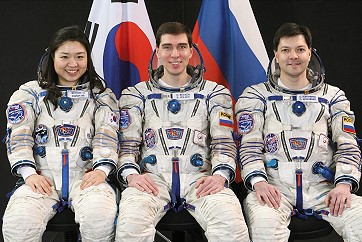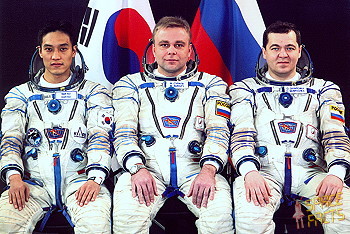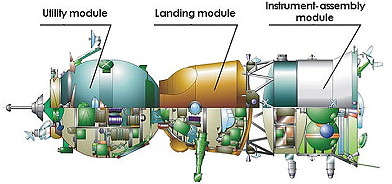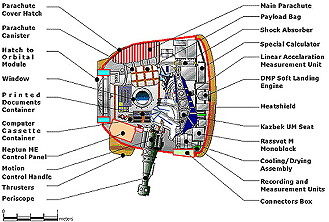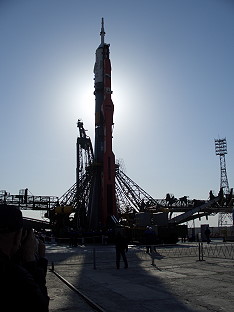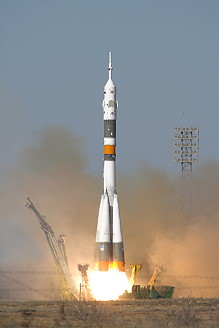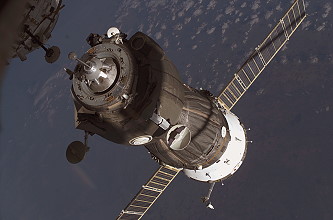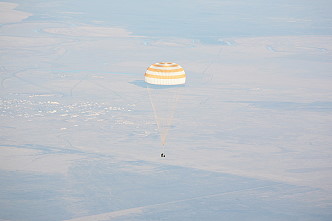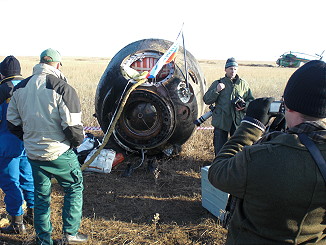Launch from the Baikonur Cosmodrome;
ISS
Expedition 17.
Landing 94 km NNE of Arkalyk
Yi
Soyeon flew on board
Soyuz TMA-12 as a guest of the Russian government
through the Korean Astronaut Program after the Korean government paid the
Russian government 25 million US dollars in agreement to support the
first
Korean astronaut in space. Her role aboard the
Soyuz is referred to as a
Spaceflight Participant in English-language Russian
Federal Space Agency and
NASA documents and press briefings.
Ko San
was originally scheduled to fly, with
Yi
Soyeon as his backup. On March 10, 2008, it was announced that
Ko San
breached regulations surrounding removal of books from the training center in
Russia, and therefore would not be allowed to fly.
Yi
Soyeon spent eight days conducting scientific experiments aboard the
International Space Station.
Yi
Soyeon was the first space traveller from South Korea. Following a two-day solo
flight
Soyuz TMA-12 docked to
ISS on April 10, 2008. Sergei
Volkov and Oleg
Kononenko replaced
Expedition 16 crew
members Peggy
Whitson and Yuri
Malenchenko.
The
Soyuz spacecraft is composed of three elements
attached end-to-end - the Orbital Module, the Descent Module and the
Instrumentation/Propulsion Module. The crew occupied the central element, the
Descent Module. The other two modules are jettisoned prior to re-entry. They
burn up in the atmosphere, so only the Descent Module returned to Earth.
The
deorbit burn lasted 261.4 seconds. Having shed two-thirds of its mass, the
Soyuz reached Entry Interface - a point 400,000 feet
(121.9 kilometers) above the Earth, where friction due to the thickening
atmosphere began to heat its outer surfaces. With only 23 minutes left before
it lands on the grassy plains of central Asia, attention in the module turned
to slowing its rate of descent.
Eight minutes later, the spacecraft was
streaking through the sky at a rate of 755 feet (230 meters) per second. Before
it touched down, its speed slowed to only 5 feet (1.5 meter) per second, and it
lands at an even lower speed than that. Several onboard features ensure that
the vehicle and crew land safely and in relative comfort.
Four parachutes,
deployed 15 minutes before landing, dramatically slowed the vehicle's rate of
descent. Two pilot parachutes were the first to be released, and a drogue chute
attached to the second one followed immediately after. The drogue, measuring 24
square meters (258 square feet) in area, slowed the rate of descent from 755
feet (230 meters) per second to 262 feet (80 meters) per second.
The main
parachute was the last to emerge. It is the largest chute, with a surface area
of 10,764 square feet (1,000 square meters). Its harnesses shifted the
vehicle's attitude to a 30-degree angle relative to the ground, dissipating
heat, and then shifted it again to a straight vertical descent prior to
landing.
The main chute slowed the
Soyuz to a descent rate of only 24 feet (7.3 meters)
per second, which is still too fast for a comfortable landing. One second
before touchdown, two sets of three small engines on the bottom of the vehicle
fired, slowing the vehicle to soften the landing.
![]()

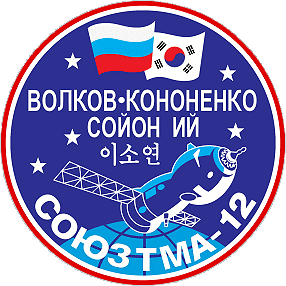
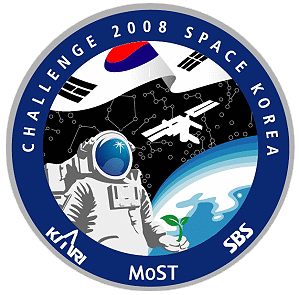
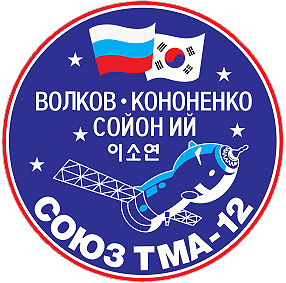
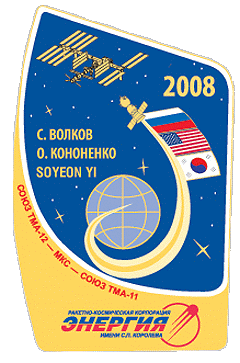
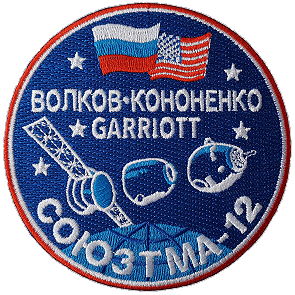
![]()
